Pennsylvania is home to a wide variety of snake species. Some of these snakes prefer wet habitats. This means you may find them when you are out enjoying the water.
This article will list the snakes you can find near the water, where in the state you can find them, and how to identify them.
1. Eastern Massasauga Rattlesnake
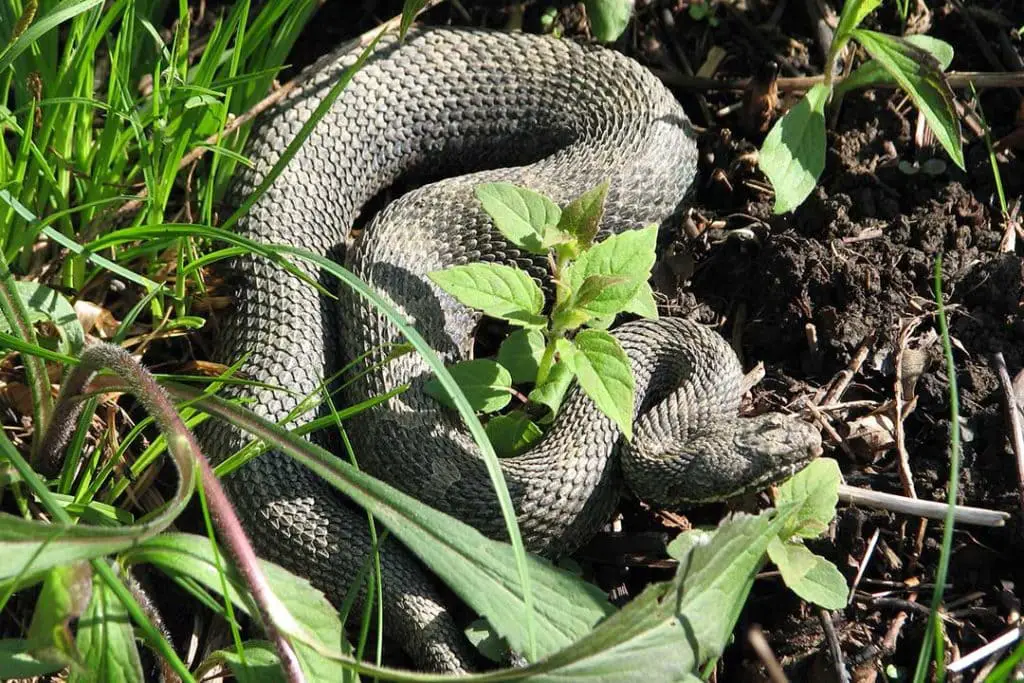
The Eastern massasauga rattlesnake (Sistrurus catenatus catenatus) is a venomous snake found only in the west of the state. They prefer wet habitats in the spring and fall and move to drier areas in the summer.
They are gray to grayish-brown with blotches on the back and spots on the sides that can become stripes when they join. The blotches are dark with a black border and white outline.
They have large triangular heads that are mostly flat. They are between 18 and 40 inches long as adults. They prefer bogs and floodplains in Pennsylvania.
They eat lizards, rodents, and frogs. They will rattle when threatened. If you hear this, freeze and locate the snake. Then back away from the snake so it feels safe enough to flee.
This will help prevent bites. If you are in their habitat, wear boots and pants to help prevent bites if you stumble on this species. This snake is one of the few venomous snakes in Pennsylvania, and is often confused with the non venomous eastern rat snake.
2. Northern Water snake
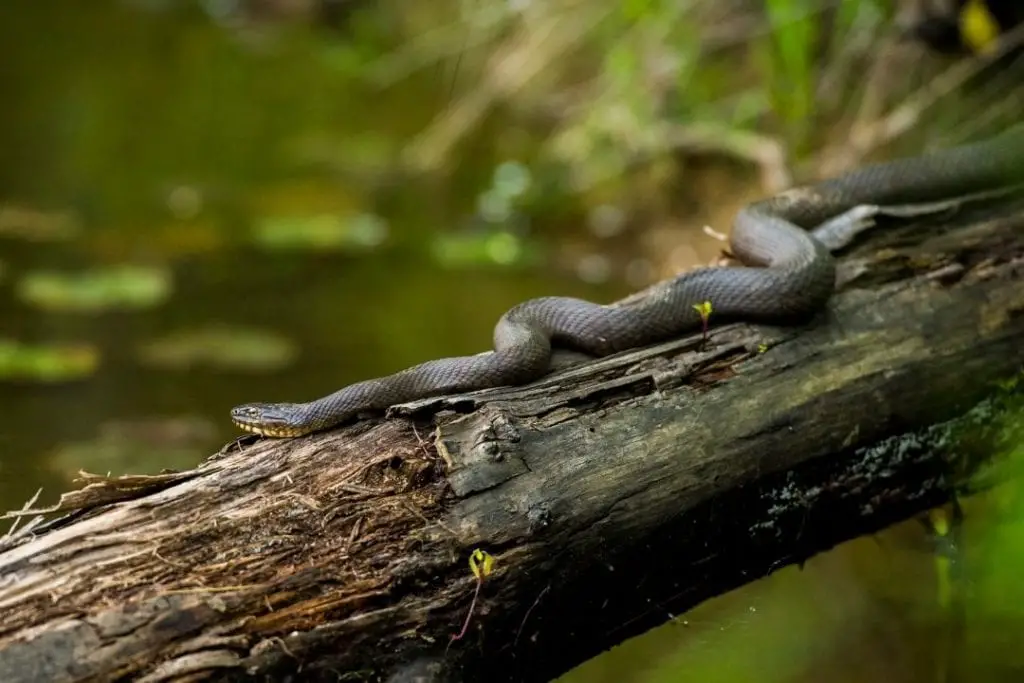
The Northern water snake (Nerodia sipedon sipedon) is found over the entire state of Pennsylvania. These snakes are heavily associated with water and rarely stray very far.
They are typically found in the open either basking near water or swimming. They are 24-55 inches long as adults. They have a grayish-brown, tan, light brown, or gray background color.
They have brown to reddish-brown saddles and rectangular blotches. Juveniles are brighter with a bold pattern, often confused with the eastern milk snake, that fades with age.
Northern water snakes are diurnal snakes that actively hunt prey. They are known for herding tadpoles and fish to the banks of a body of water and eating as many as they can catch.
They also eat crayfish, insects, other snakes, and virtually anything they can overpower and eat alive.
3. Queen snake

The queensnake (Regina septemvittata) is rarely found far from water since this species is prone to dehydration. They are found mainly in the west and southeast of the state.
These snakes eat crayfish almost exclusively. They hunt around looking for freshly molted crayfish that they then eat alive. This means that they are primarily found in streams and rivers with crayfish populations.
They also eat fish and tadpoles, but this is a minor part of their diet.
They are between 14 and 23 inches long as adults. They are tan, greenish, or brown with yellow stripes down the body. The belly is yellow with four brown stripes down the length of the animal.
These stripes join near the tail. They are considered to be of special concern since they are restricted to such narrow habitats and need very clean water.
4. Kirtland’s Snake
The Kirtland’s snake (Clonophis kirtlandii) is a small snake found rarely in the Allegheny, Butler, and Venango counties.
These snakes are only 14-23 inches long as adults. They have a black head with cream on the throat, chin, and around the mouth. The back of the snake is reddish-brown with four rows of dark blotches.
They have a bright red to orange belly.
Sometimes confused with the more common northern ring necked snake, this snake is highly endangered and hasn’t been spotted in 60 years.
They prefer wet habitats and are primarily burrowing snakes.
It eats mostly earthworms and slugs. If you see one, please report it. Since they are burrowing animals, it is unknown whether they are truly extinct in the state.
5. Ribbon Snake
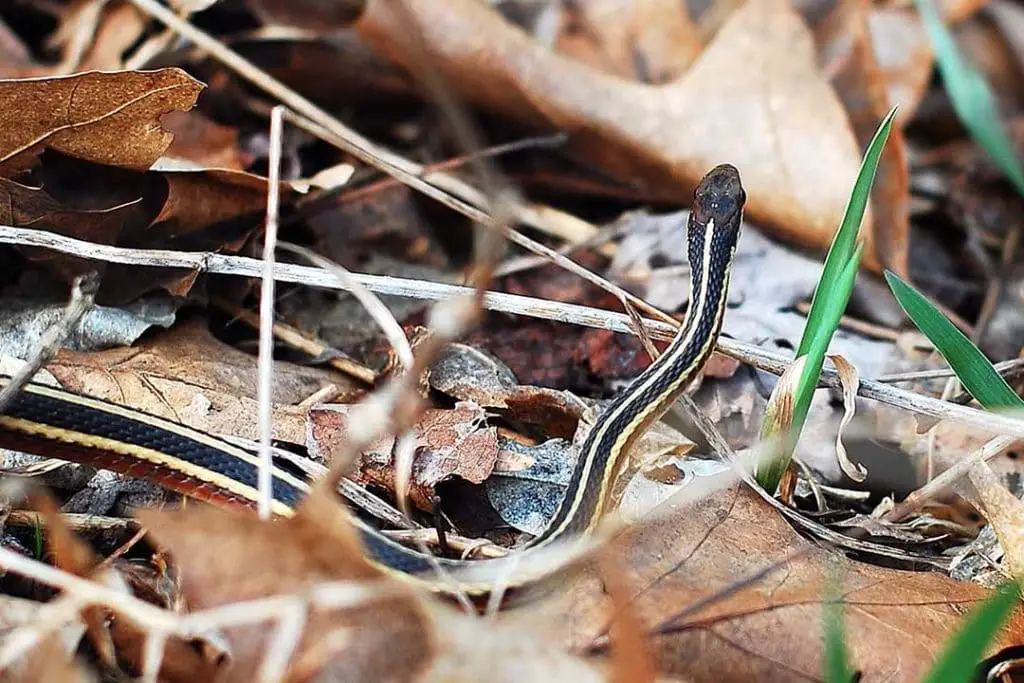
Ribbon snakes (Thamnophis sauritis) are found over most of Pennsylvania. There are two subspecies found in Pennsylvania. These are the Eastern ribbon snake (T. s. sauritis) and the Northern ribbon snake (T. s. septentrionalis).
Ribbon snakes are typically black or reddish-brown with yellow stripes. They have a light bar in front of their eyes that helps to distinguish them from the Eastern garter snake.
They tend to live close to the water and will flee into it to escape predators. They mainly eat frogs and salamanders, but will also eat fish. They can be found from April to October and are typically active snakes.
They brumate during the winter in animal burrows or anthills. These snakes rarely get larger than 34 inches long.
6. Northern Rough Green snake
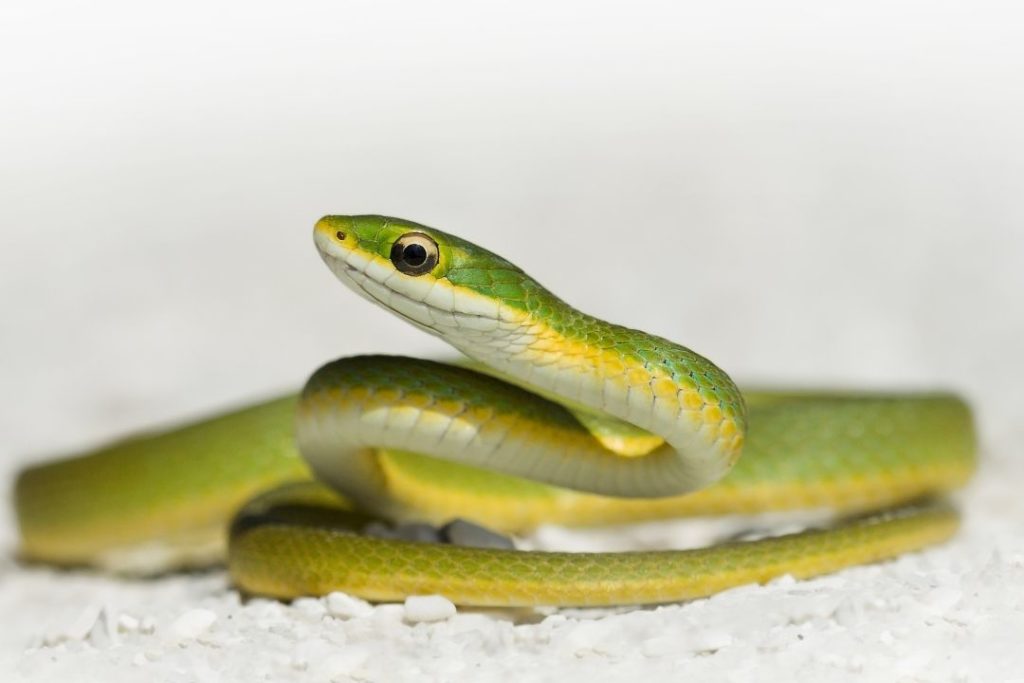
The Northern rough green snake (Opheodrys aestivus) is an endangered species that only has been seen in the southeast of the state and a few scattered counties in the west of the state.
They live in forest edges close to ponds and lakes. They are arboreal and spend the nights in the trees. During the day, they hunt in the dense vegetation along the shores of lakes and ponds.
They eat insects. Their primary prey items are crickets, grasshoppers, other insects, and spiders.
These are very slender snakes with a green body and a cream or yellow-green belly. Juveniles are identical to adults but can be lighter in color. They are typically between 22 and 32 inches long as adults.
Since these snakes have only been sighted in two counties in the past 8 years, they are considered very rare.
If you see one, particularly outside of Lancaster or Chester counties, please report it. The other counties that include their range are Crawford, Greene, and Cumberland counties.
7. Eastern Garter Snake
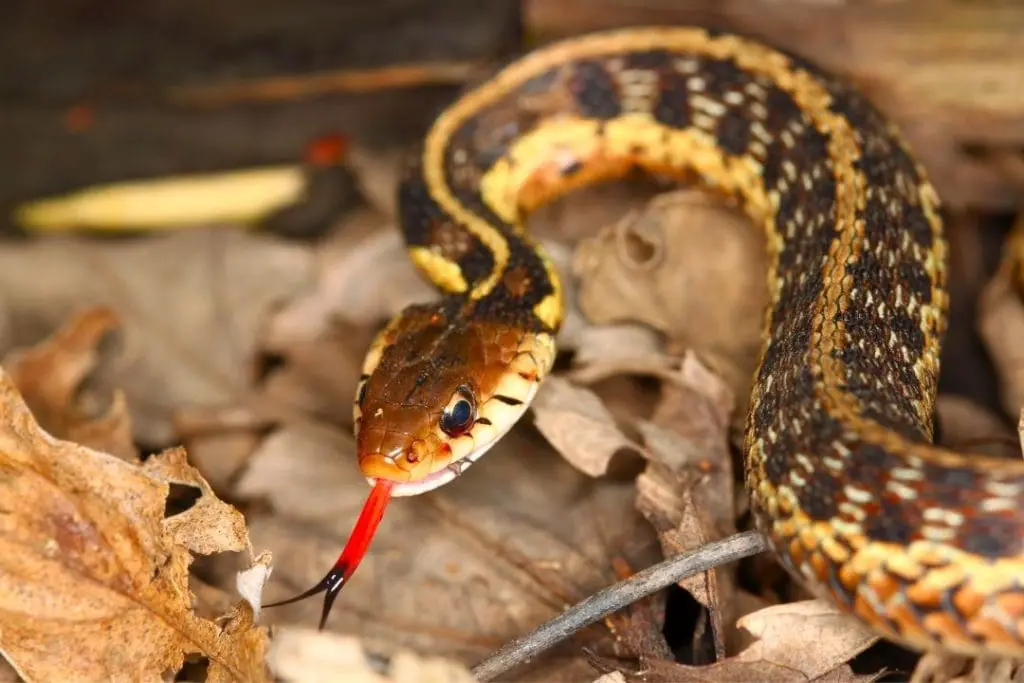
The Eastern garter snake (Thamnophis sirtalis sirtalis) is easily confused with the ribbon snake. The Eastern garter snake is a thicker snake that does not have the light bars in front of the eyes.
They are only 20-28 inches long as adults and can be found throughout the entire state of Pennsylvania. They typically have a vertebral stripe that can be absent and two lateral stripes.
The background color is dark green, olive, olive-brown, black, gray, or tan. The stripes can be yellow, cream, white, tan, brown, or gray. The belly is white or cream with two rows of black spots.
They are sometimes mistaken for the more dangerous northern copperhead.
They can be found in many habitats, but they prefer quarries, banks of ditches, trash heaps, canals, streams, and rivers. They typically hide under debris.
They are diurnal and are typically active from April to October.
They can be found basking on winter days near their dens. They eat amphibians, fish, earthworms, slugs, snails, leeches, insects, crayfish, and other pennsylvania snakes.
They prefer to flee into the water, but if confronted they will make themselves seem larger and will strike. If handled, they release a foul-smelling musk and writhe.
Conclusion
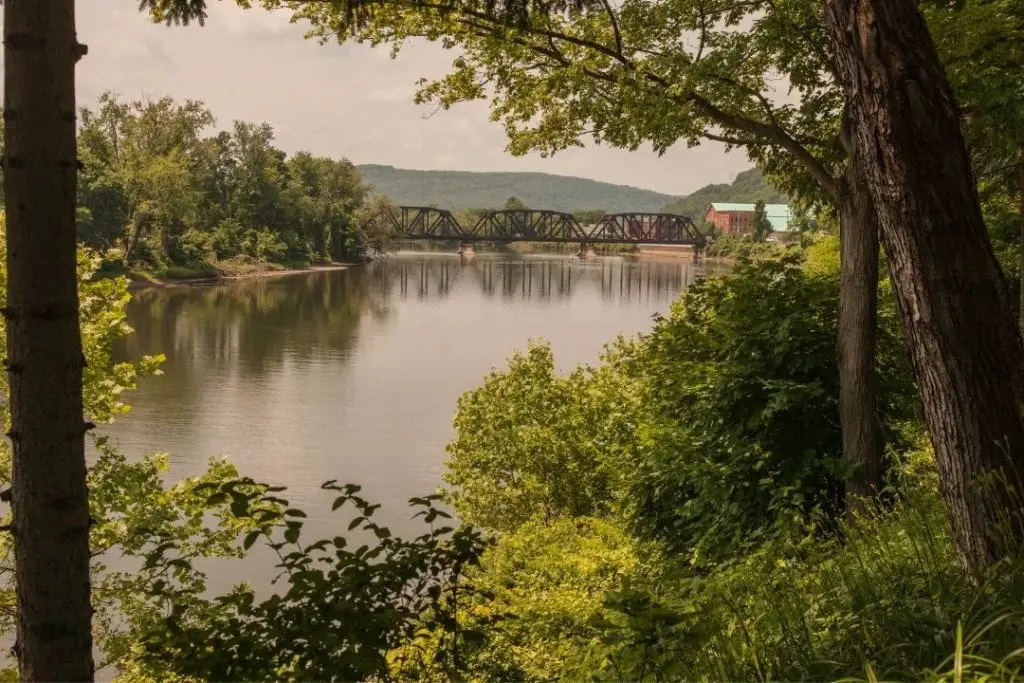
We hope this has helped you learn about the snakes you can find near the water in Pennsylvania.
Most snakes are harmless non aggressive snakes. They will only bite if you try to handle them. Leave any snake you find alone, particularly in rattlesnake territory.
If you have seen any of these snakes in pennsylvania natural parks or anywhere in the state, I would love to hear about them. If you have any other comments or questions, please leave them below.
If you have seen any of the endangered species, please report these sightings to local authorities.
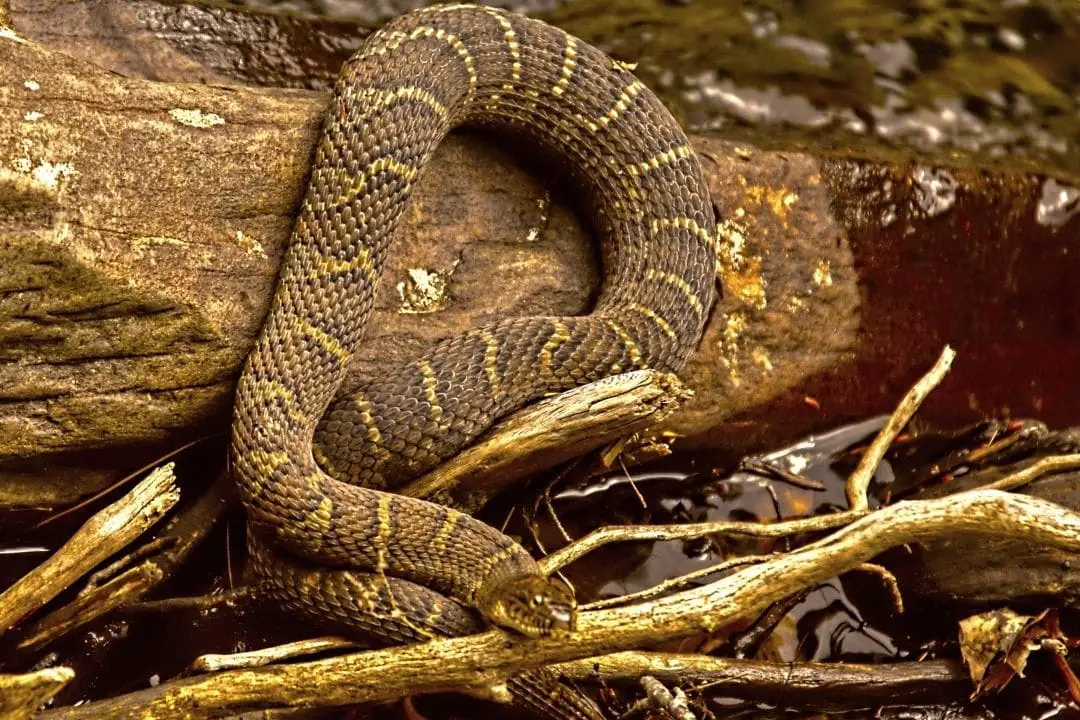
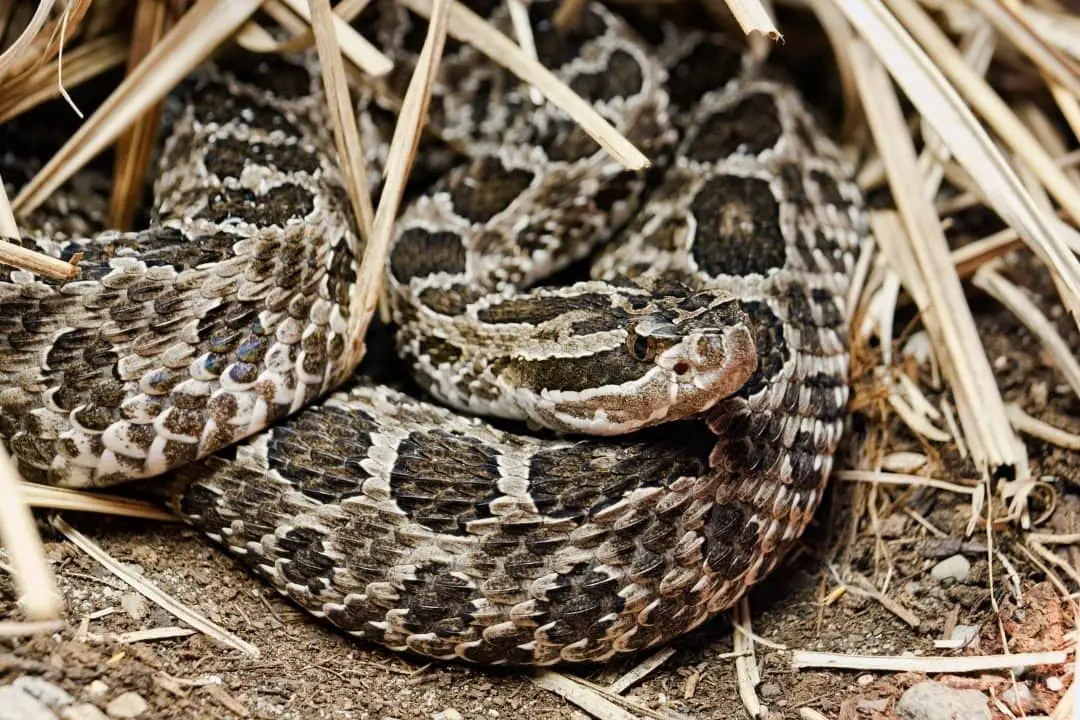
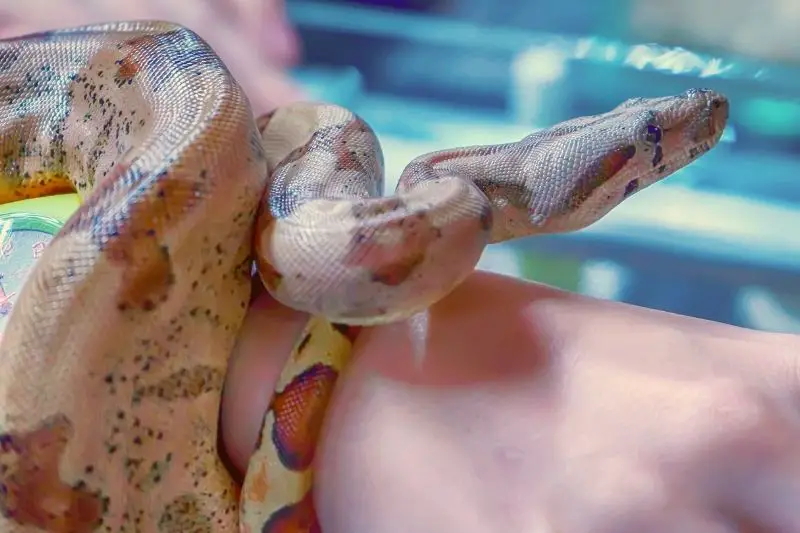
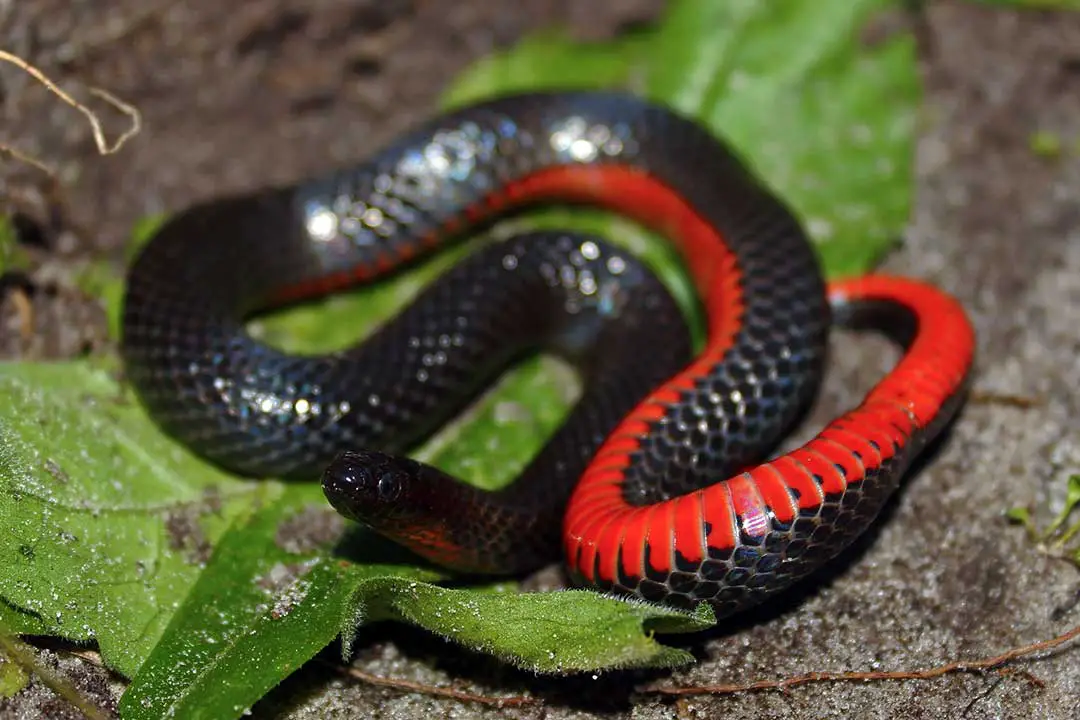

I live in NW PA and am the process of cleaning out our family pond. Yesterday I was greeted by a three foot water snake several times in shallow water with a growth of water lilles around. I almost felt like it was stalking me. Maybe I got to close to it’s nest or something. Anyways when I was down there again today I found another black colored snake about 7″ long in the shallow end again. I’ve been out of state for 30 plus years so I’m not used to seeing snakes at the pond. Turtles yes … snakes no. I’m pretty sure they’re harmless but they didn’t fit any description in the book I looked in. Would you give me your opinion as to what species they might be. Thank you much